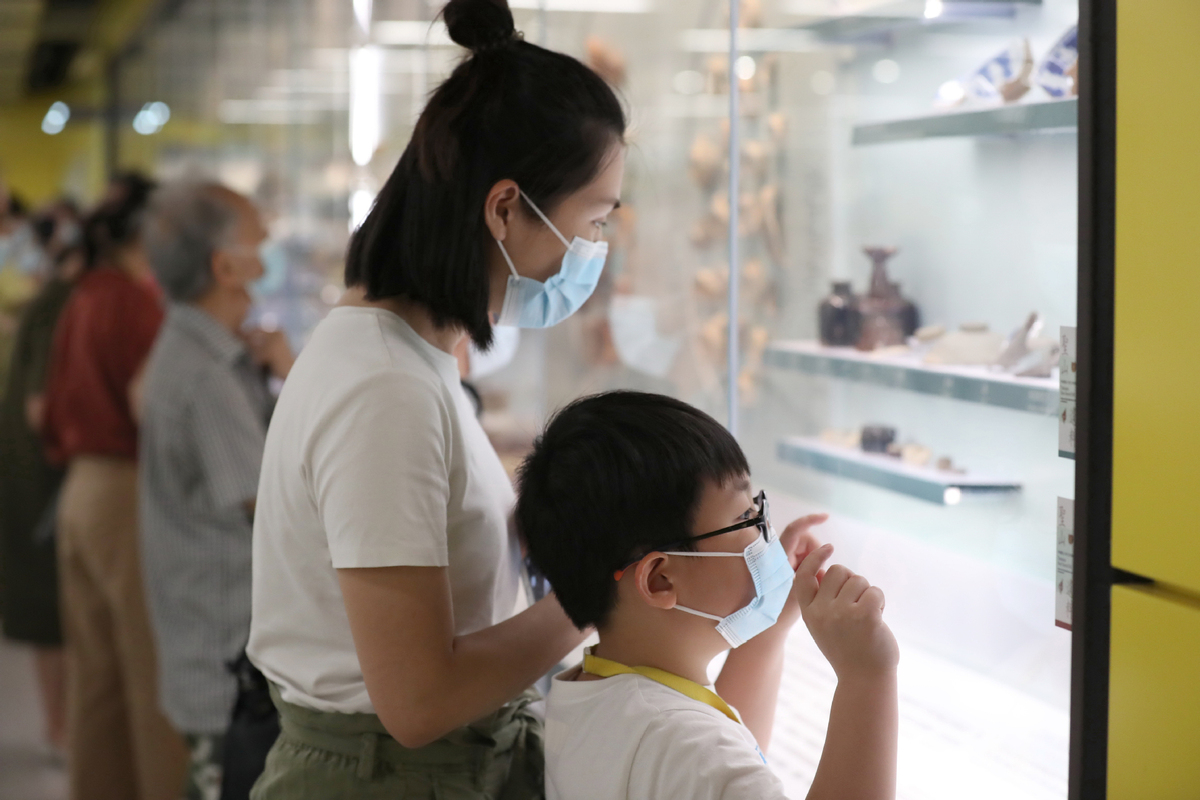

His Chinese ink-and-brush writing featuring strong visual effects, along with the mosaic tiles in distinctive colors, was applied since the opening of the Hong Kong Island Line in the 1980s to help passengers distinguish different stations.
Chinese calligraphy, like architecture, is also about drawing lines and achieving balance by the exact ratio of different parts, Au said, while his displayed works at stations are more about finding the rhythm that suits the characteristics of each station.
The newly opened Tuen Ma Line, where Au's artworks are showcased, is Hong Kong's longest railway line that stretches 56 km with 27 stations.
Putting aside the challenging task of protecting historical sites during construction, building stations is hard in Hong Kong's well-developed and densely-populated communities, Senior Architectural Manager of Tuen Ma Line Wincy Chow said.
The construction needs to be carried out without obstructing transportation on the ground and plans were adjusted for the five ancient wells found at the site, according to Chow.
MTR, the public transit system that transports millions of passengers during normal weekdays, is not only a carrier but also a messenger from the past to the future.
"With the development of the economy, people's voice for historic monuments conservation is growing louder," Commissioner for Heritage Ivanhoe Chang said, and the Antiquities and Monument Office was founded in 1976 to protect and preserve Hong Kong's historic treasures.